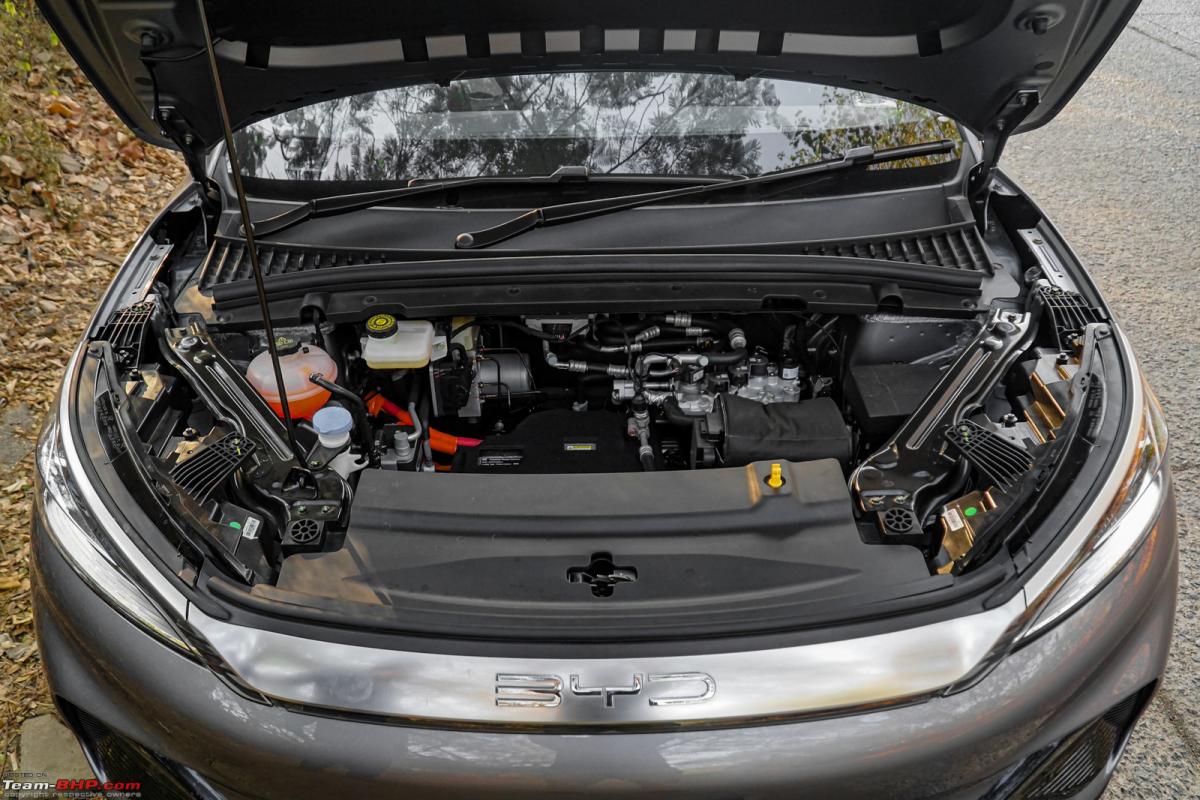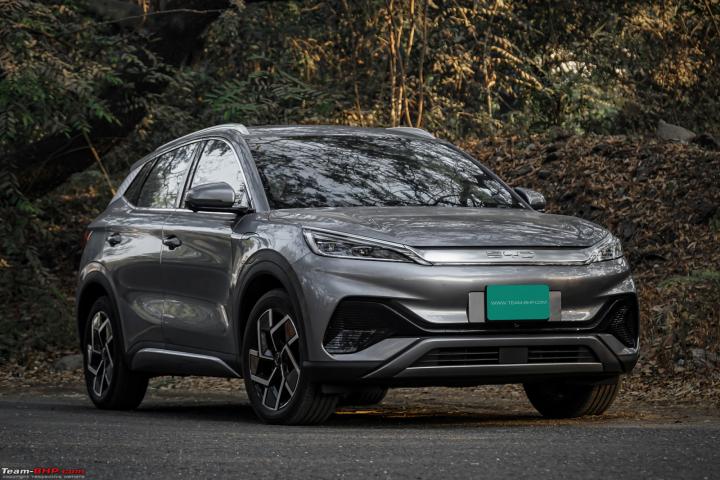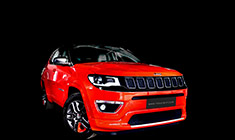News
BYD Atto 3: Observations after a day of driving
The BYD Atto 3 has an ARAI claimed range of 521 km and as per NEDC (New European Driving Cycle) the range is 480 km. Both these tests are done on a dynamometer and do not reflect the real-world range. In real-world driving conditions, you can expect a range of ~ 400 km.
Driving the BYD Atto 3

Before we get to the driving part, let’s get some basics right. There are 3 main components in an EV – the battery, the motor, and the controller/charger. The battery is what stores the energy and the motor is what uses that energy to move the car. The controller/charger converts the energy from the battery into a usable form to power the motor. In more technical terms, the power grid from your house or a charging station is usually an AC. The lithium-ion battery can store electric energy in DC form. So while charging, there’s an AC/DC converter that will convert the power grid's AC into DC and store it in your car’s battery. The DC fast chargers that you see usually have the AC/DC converter inbuilt, which is how they can charge your car’s battery faster.
It's important to note that the Atto 3 is built on an EV-specific platform and is not based on an IC engine platform like most conventional EVs. Hence, the design of the batteries and powertrain has been done keeping the EV-specific requirements in mind. For starters, the Blade battery has cells that are made in a honeycomb-like structure. So, each cell serves as a structural beam to withstand force. Combined together and after placing high-strength panels on the upper and lower side of the pack, the rigidity of the structure is increased. This does affect the dynamics of the car. Next up is the powertrain – the Atto 3 uses an 8-in-1 electric powertrain system. What does this mean? 8 components of the powertrain which are usually placed separately are combined into one component to optimize space and energy efficiency (also lesser cables). The components that are grouped in the Atto 3’s powertrain are - VCU (vehicle control unit), BMS (battery management system), MCU (motor control unit), PDU (power distribution unit), DC-DC controller, on-board charger (explained above), drive motor and transmission. Since all these components are compressed together, this reduces the load on the front axle significantly. How does this affect the car in terms of driving? Read on to find out.
We got to drive the Atto 3 on the streets of Mumbai and it felt right at home. Start the car, shift to ‘D’ mode, take your foot off the brake pedal and the car gets off the line in the smoothest way possible. You also start to hear faint music from the speakers while driving around at low speeds. It’s more like ambient music which is also played on the outside of the car to let the pedestrians know that there’s a car coming. It’s not very loud and can be heard when you’re about a meter away from the car. We saw some very confused people wondering why the car is playing soothing music on the road. Build some speed and the music stops.
If you primarily drive around in the city, you will appreciate the Atto 3’s smoothness. The power delivery till part throttle is linear and predictable. No jerks from gearshifts and no engine sound means it is an extremely refined experience. Our preferred setting while driving in the city was Eco Mode and with the highest level of regeneration. It felt adequate for driving in the city and keeping up with the traffic. Something worth mentioning about city driving is the size of the car. It has a broad footprint and it doesn't easily mask its width & length. You have to be careful when maneuvering the car out of tight lanes and might even have to use the 360-degree camera.
Floor the A pedal and you will be greeted with instant acceleration. The car is fast and the 310 Nm torque is available right from the get-go. BYD claims a 0-100 km/h time of 7.3 seconds and we don’t doubt it. You’ll definitely be ahead of most of the IC engine cars when the signal turns green. If you enjoy instant acceleration and are experiencing an electric car for the first time, this car might just make you a convert. If you’ve driven some of the other EVs, you will notice that the acceleration is very similar to others in this range. As mentioned earlier, the weight on the front axle is less and BYD has made sure that the power delivery is a little more linear. Otherwise, this would result in a lot of wheelspin under hard acceleration.
Out on the highways, the Atto 3 is just as good as in the city. Getting up to 80 / 100 km/h is effortless and so is maintaining it. Want to make a quick overtake, no worries there. Just bury the accelerator pedal and you will zoom past the car ahead with ease. You'll hit silly speeds effortlessly and not even realize it due to the lack of drama (engine noise, etc.). Remember that single-gear EVs don't have the higher-end punch above 120 km/h that geared turbo-petrol cars have. The top speed of the Atto 3 is limited to 160 km/h. If you drive hard, the range will drop faster. This is also why you will see EVs that are driving longer distances sticking to the middle lane and cruising at 80-100 km/h (which is the best cruising speed for the current lots of EVs).
There are 3 driving modes to choose from and unlike some other cars, these aren't gimmicky. They're mapped specifically for different driving styles and also change the steering weight.
- Normal Mode : This is the default mode to drive in and works well in the city as well as the highway. It is a good balance of power and economy. The steering is light in this driving mode.
- Eco Mode : When you want to extract maximum range, this is the mode to engage. The throttle response is dumbed down which results in a smoother drive. However, you never feel that the car is lacking power. There’s still enough power on tap to keep up with the traffic and make those quick overtakes. We found this mode to be the best for driving in the city. The difference in steering weight from normal mode is very little. It almost makes the Normal mode redundant.
- Sport Mode : Want to show your friends the EV acceleration, scroll down to this mode, and off you go. The throttle response is sharp and the car feels ready to fly. It feels a little too jerky for day-to-day city driving and also eats up battery faster. Best to use this mode on the highways when you want to have some fun while driving. The steering weighs up slightly, but not as much as enthusiasts would enjoy.
Regenerative Braking
BYD has kept it simple with regenerative braking. There are only 2 levels – Standard and High. The Standard level is barely noticeable and if you have the car in this mode, you might end up using the brakes a lot. The High level very much resembles engine braking in IC engine cars. It’s not very intrusive and you won’t be getting a head nod every time you lift off the accelerator. It’s great for driving around in the city as well as on the highways. People wishing to do hypermiling with the Atto 3, will wish for stronger regeneration from the motor.
Noise, Vibration & Harshness (NVH)
As is the case with EVs, the Atto 3 is also super quiet. There’s no engine or gearbox to make any noise, so the overall driving experience is silent. At low speeds, the car’s pedestrian warning system music is heard on the outside and inside too. Inside the cabin, this might be irritating for some people as it plays in the background even when you are playing some music.
At highway speeds, the wind noise is well controlled, but the tyre noise, at 100 km/h, is very much audible. The motor spins silently at high speeds and the whine is very well controlled.
Range
The BYD Atto 3 has an ARAI claimed range of 521 km and as per NEDC (New European Driving Cycle) the range is 480 km. Both these tests are done on a dynamometer and do not reflect the real-world range. In real-world driving conditions, you can expect a range of ~ 400 km. Given the rising demand for EVs, there are plenty of charging stations popping up everywhere, which ought to take care of range anxiety as well. There are many apps and websites like pulseenergy.io, plugshare.com, etc. that list out all the charging stations near you. At the end of the day though, remember the golden rule = EVs are best charged where they are parked (either at your office or home).
Charging
When you buy a BYD Atto 3, you get a 7 kW home charger with the car (with installation) that can charge the car in 9.5-10 hours. If you’re traveling and need a quick refill, an 80 kW DC fast charger can juice up the battery from 0% to 80% in 50 minutes. You also get a 3kW portable charger that can be plugged into any 15 Amp socket (the larger 3-pin sockets used for ACs and fridges), but that would take a very long time to charge from 0-100%. If you ever run out of battery, you can always contact BYD’s roadside assistance. You get 6 years of roadside assistance with the Atto 3.
The BYD Atto 3 has a drag coefficient of 0.29Cd:

Suspension
Ride Comfort
The Atto 3 gets a MacPherson strut suspension at the front and multi-link suspension at the rear. While the first thought might be that the setup is sporty considering it has independent suspension all around, it’s not. This Atto 3’s suspension setup is very comfort-oriented, and it does the job well. Low-speed ride is good, and the car absorbs small to medium-sized bumps quite well. Passengers will appreciate the absorbent nature of the suspension and will be comfortable at the front and rear too. The suspension also works silently at city speeds which is a good thing. Big potholes do register themselves inside and you will have to be careful while tackling them. The recommended tyre pressure is a rather high 36 PSI and at this pressure, you do feel a lot of the road. We dropped the pressure to 32 PSI and there was a noticeable difference. You get that added bit of cushioning which makes the ride more comfortable. If you are primarily going to be driving in the city, keep the pressure at 32 PSI and fill up to the recommended 36 PSI on the highways. Also note that the TPMS warning doesn’t come up at 32 PSI, so you’re good.
Handling & Dynamics
In a straight line, the Atto 3 feels stable and it doesn’t feel nervous even at 120 km/h. Going over some undulations or expansion joints will result in a fair bit of vertical movement though. As mentioned earlier, the suspension setup is tuned more for comfort than sporty handling. There’s a fair bit of body roll in corners and you even get some understeer. This is a car that does not like to be pushed hard in corners. Also, the lighter front end doesn’t really inspire confidence while turning in.
Quick lane changes at high speeds are something you should avoid in the Atto 3. While most of us are used to driving heavy front-end cars, this center-heavy car might catch you off guard. The car has a pendulum-like effect at speed where the rear sways a bit, which gives an uncomfortable feeling. Better to give gradual and slow steering inputs at high speeds.
Steering
The electric power steering is a nice unit and easy to operate as well. It is very light at city speeds which makes it very user-friendly. The steering weighs up on the highways, but we wished that it would weigh up some more. You can switch to Sport mode for a little heft, but it's still on the lighter side. It’s vague in the centre and doesn’t feel very connected as well.
Braking
The Atto 3 has ventilated discs at the front and solid discs at the rear. All in all, the car has good stopping power and emergency braking situations are handled well too. On the other hand, the brake pedal does feel a little spongy, and takes some time to get used to it.
Continue reading the discussion on the BYD Atto 3 on our forum.




















